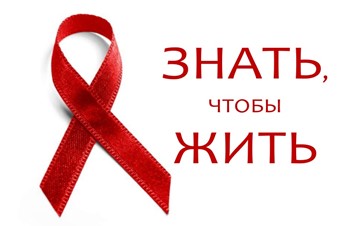LEADERSHIP - COMMUNITIES!
An AIDS-free generation means that virtually no children are born with HIV; that as these children grow older, their risk of infection will be much lower than it is today; and that those infected can access treatment to prevent them from developing AIDS and transmitting the virus to others.
Anthony Fauci
The issues of this year's World AIDS Day is "Leadership to Communities". Communities are organizations of people living with or at risk of HIV. Communities connect people with health organizations, inspire trust and provide psychological support. The purpose of World AIDS Day is to raise global awareness of HIV/AIDS and to demonstrate international solidarity in the face of the pandemic. It is a call to action to empower communities and help them lead the fight. COVID-19 has clearly demonstrated that during any pandemic, the safety of all depends on the safety of everyone. To succeed, it is essential to provide assistance to all who need it.
December 1, 1988 was proclaimed World AIDS Day by the decision of WHO and the UN General Assembly. In many countries of the world, the day has become a significant date, marking the relevance of the topic at the present stage, achievements in the field of HIV prevention and treatment. The symbol of the fight against AIDS is a red ribbon, which means support, compassion and hope for a future without AIDS.
According to WHO, there are more than 39 million people living on the planet infected with the immunodeficiency virus. Over the years of the epidemic, more than 40 million people have died from HIV-related illnesses. The spread of HIV infection remains one of the health and social global challenges facing all nations. Globally, disparities in the availability of tests, drugs, new technologies and scientific evidence continue to exist in selected countries in Africa and Asia. Statistics show that the rate of HIV infection in some countries remains relatively high, and this is partly due to a lack of awareness of transmission and inadequate personal risk assessment. Lack of information about the disease and prevention measures creates a great many myths and unfounded fears, and people living with HIV are socially stigmatized. It is important to remember that HIV is not transmitted by household contact and airborne droplets!
"Education offers hope. Millions of people are now learning to live with HIV/AIDS instead of waiting to die from it."
Laura Bush
Pathways of infection:
- Sexual contact;
- hemotransfusion route;
- transplacental route (from mother to child during pregnancy and lactation).
Who are the groups at risk of HIV infection?
- drug addicts;
- Persons who are sexually promiscuous;
- persons practicing unprotected sex;
- People who have anal sex;
- Persons suffering from sexually transmitted diseases;
- patients in need of hemodialysis, blood transfusion;
- medical professionals in contact with HIV-infected persons;
- children of HIV-infected mothers.
HIV prevention measures:
- Prevention of casual sexual intercourse, use of barrier methods of protection;
- preference of sexual contacts with a regular sexual partner;
- regular HIV screening of both partners;
- refraining from drug use;
- use only disposable syringes and needles;
- informational messages: warnings in mass media about the risk of infection, promotion of healthy lifestyle and inter-sex relations;
- use of personal hygiene products: razor, manicure utensils, etc;
- use only sterile instruments when piercing ears;
- barrier contraception, do not have unprotected sexual relations.
"History will surely judge us harshly if we do not put all the energy and resources we can into the fight against HIV/AIDS."
Nelson Mandela
Timely testing is important in the prevention of HIV infection, as early diagnosis of HIV infection contributes to more effective treatment, improves the quality of life of people living with HIV and reduces the risk of HIV transmission to others.
On the eve of World AIDS Day, the Republic will hold information and awareness-raising activities aimed at drawing attention to the problem of HIV infection: information and education campaigns with distribution of information materials, conducting rapid HIV testing.
"The fight against HIV/AIDS requires leadership from all parts of government, and it must go straight to the top. AIDS is much more than a health crisis. It is a threat to development itself."
Kofi Annan
Department of propaedeutics of children’s diseases
translated
Ismoilov R.

